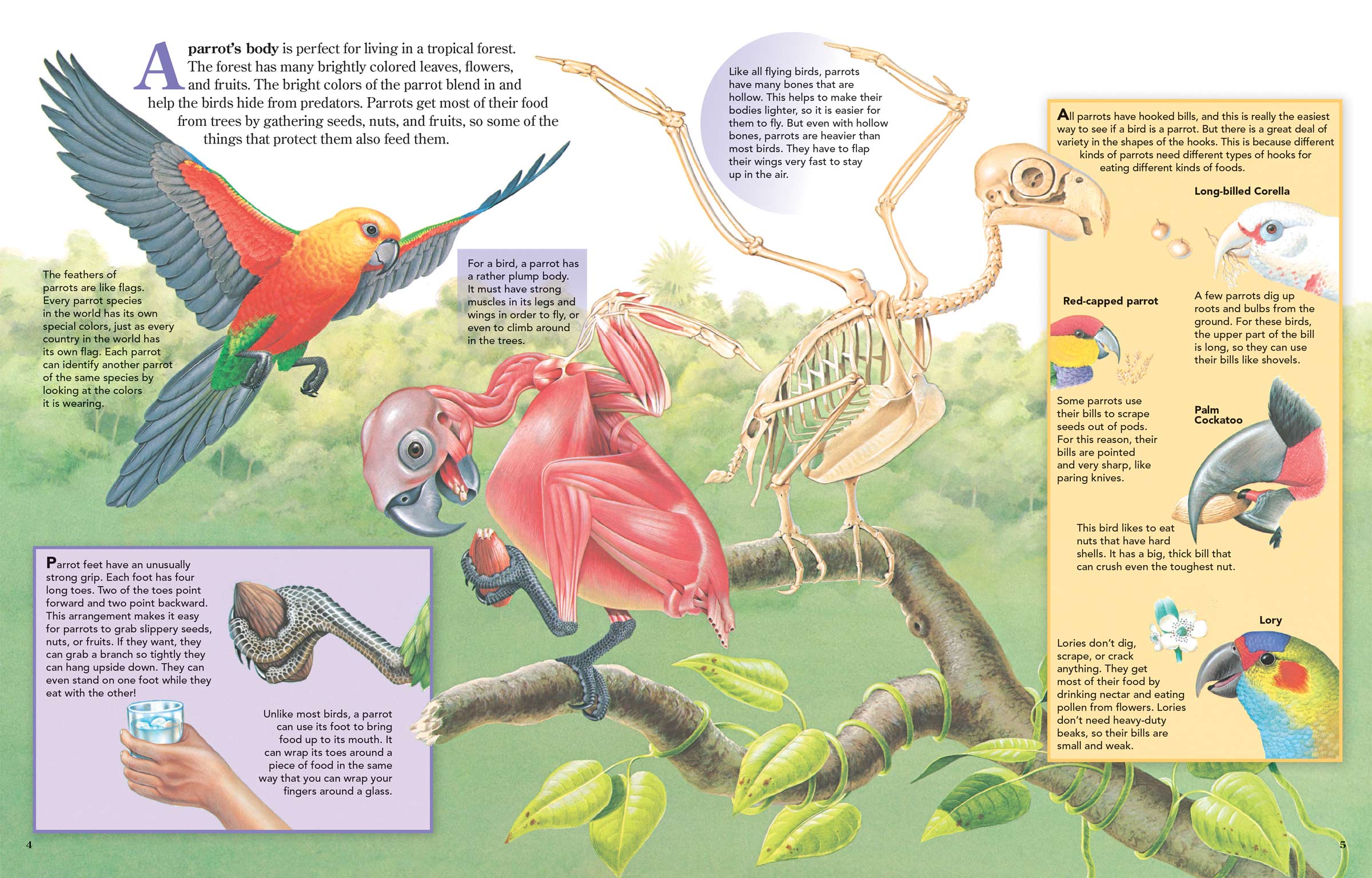
A Body Built for a Rain Forest
ByA parrot’s body is perfect for living in a tropical forest. The forest has many brightly colored leaves, flowers, and fruits. The bright colors of the parrot blend in and help the birds hide from predators. Parrots get most of their food from trees by gathering seeds, nuts, and fruits, so some of the things that protect them also feed them.
The feathers of parrots are like flags. Every parrot species in the world has its own special colors, just as every country in the world has its own flag. Each parrot can identify another parrot of the same species by looking at the colors it is wearing.
For a bird, a parrot has a rather plump body. It must have strong muscles in its legs and wings in order to fly, or even to climb around in the trees.
Parrot feet have an unusually strong grip. Each foot has four long toes. Two of the toes point forward and two point backward. This arrangement makes it easy for parrots to grab slippery seeds, nuts, or fruits. If they want, they can grab a branch so tightly they can hang upside down. They can even stand on one foot while they eat with the other!
Unlike most birds, a parrot can use its foot to bring food up to its mouth. It can wrap its toes around a piece of food in the same way that you can wrap your fingers around a glass.
Like all flying birds, parrots have many bones that are hollow. This helps to make their bodies lighter, so it is easier for them to fly. But even with hollow bones, parrots are heavier than most birds. They have to flap their wings very fast to stay up in the air.
All parrots have hooked bills, and this is really the easiest way to see if a bird is a parrot. But there is a great deal of variety in the shapes of the hooks. This is because different kinds of parrots need different types of hooks for eating different kinds of foods.
A few parrots dig up roots and bulbs from the ground. For these birds, the upper part of the bill is long, so they can use their bills like shovels.
Some parrots use their bills to scrape seeds out of pods. For this reason, their bills are pointed and very sharp, like paring knives.
This bird likes to eat nuts that have hard shells. It has a big, thick bill that can crush even the toughest nut.
 Lories don’t dig, scrape, or crack anything. They get most of their food by drinking nectar and eating pollen from flowers. Lories don’t need heavy-duty beaks, so their bills are small and weak.
Lories don’t dig, scrape, or crack anything. They get most of their food by drinking nectar and eating pollen from flowers. Lories don’t need heavy-duty beaks, so their bills are small and weak.

